In the evolving landscape of vaping, consumer preferences are being shaped by aesthetics just as much as flavor profiles. One of the most visually arresting choices for manufacturers is whether or not to add pigments to e-liquid formulations. Beyond mere appearance, the presence or absence of color in vape juices carries implications for branding, flavor perception, regulatory compliance, and even health safety. As manufacturers search for ways to stand out in a saturated market, colored vape juice presents both opportunity and risk.
This comprehensive analysis will delve into the chemistry, psychology, regulatory framework, and consumer behavior surrounding e-liquid colorants. Whether you’re a seasoned manufacturer, a startup brand, or a hobbyist blender, understanding the full scope of the “color vs. no color” decision can help you build more trustworthy, marketable, and compliant products.
Colorants are substances added to liquids to change or enhance their visual appearance. In e-liquids, colorants may include natural plant-derived compounds or synthetic food-grade dyes. Importantly, while these additives can make a vape juice visually appealing, they are not typically intended to affect flavor directly. However, the psychological interplay between color and flavor means they are often indirectly linked in the consumer’s mind.
Types of Colorants in E-liquids:
Natural Colorants: These are extracted from plant or animal sources. Examples include beetroot extract (red), chlorophyllin (green), turmeric (yellow), and spirulina (blue-green). Natural pigments are often less stable and can degrade under heat or light exposure.
Synthetic Food Dyes: Approved by food safety agencies like the FDA and EFSA, synthetic colorants such as Red 40, Blue 1, and Yellow 5 offer high stability and vibrant hues but may face scrutiny for health implications when inhaled.
Colorants must be compatible with the propylene glycol (PG) and vegetable glycerin (VG) base liquids used in vape juice. Their solubility, interaction with flavor compounds, and behavior under heat are all critical to ensuring a consistent and safe vaping experience.
The solvent properties of PG and VG play a crucial role in how pigments behave. While PG is a good carrier for water-soluble substances, VG’s higher viscosity and lower polarity can create challenges for even dispersion.
Pigment-Solvent Compatibility Matrix:
| Pigment Type | VG Compatibility | PG Compatibility | Notes |
| Beetroot Extract | Moderate | High | May oxidize over time |
| Curcumin (Turmeric) | High | Moderate | Can impart a spicy undertone |
| Blue Spirulina | Low | Low | Highly unstable under heat |
| FD&C Red 40 | High | High | Chemically stable, bright red |

Pigment Stability in VG/PG Solutions – Natural vs. Synthetic
E-liquids are heated to high temperatures during use, which can degrade pigments or lead to harmful byproducts. For example, certain dyes might break down into aromatic amines when exposed to coil temperatures exceeding 200°C.
Furthermore, heavily pigmented liquids can lead to carbon buildup on coils, reducing device lifespan and altering taste. This is particularly true for sugary or dark-colored liquids.
Best Practices:
Despite being safe for ingestion, not all food dyes are safe for inhalation. The respiratory system lacks the digestive enzymes and pathways used to metabolize these compounds safely.
Health Considerations:
Quote Box: “Just because something is edible doesn’t mean it’s vapeable.” — Dr. Arjun Sharma, Inhalation Toxicologist
Color has a profound effect on our sensory expectations. This is known as crossmodal perception. For example, a red-colored liquid may predispose users to perceive a berry or cherry flavor, even if the underlying formula is neutral.
Color–Flavor Associations:
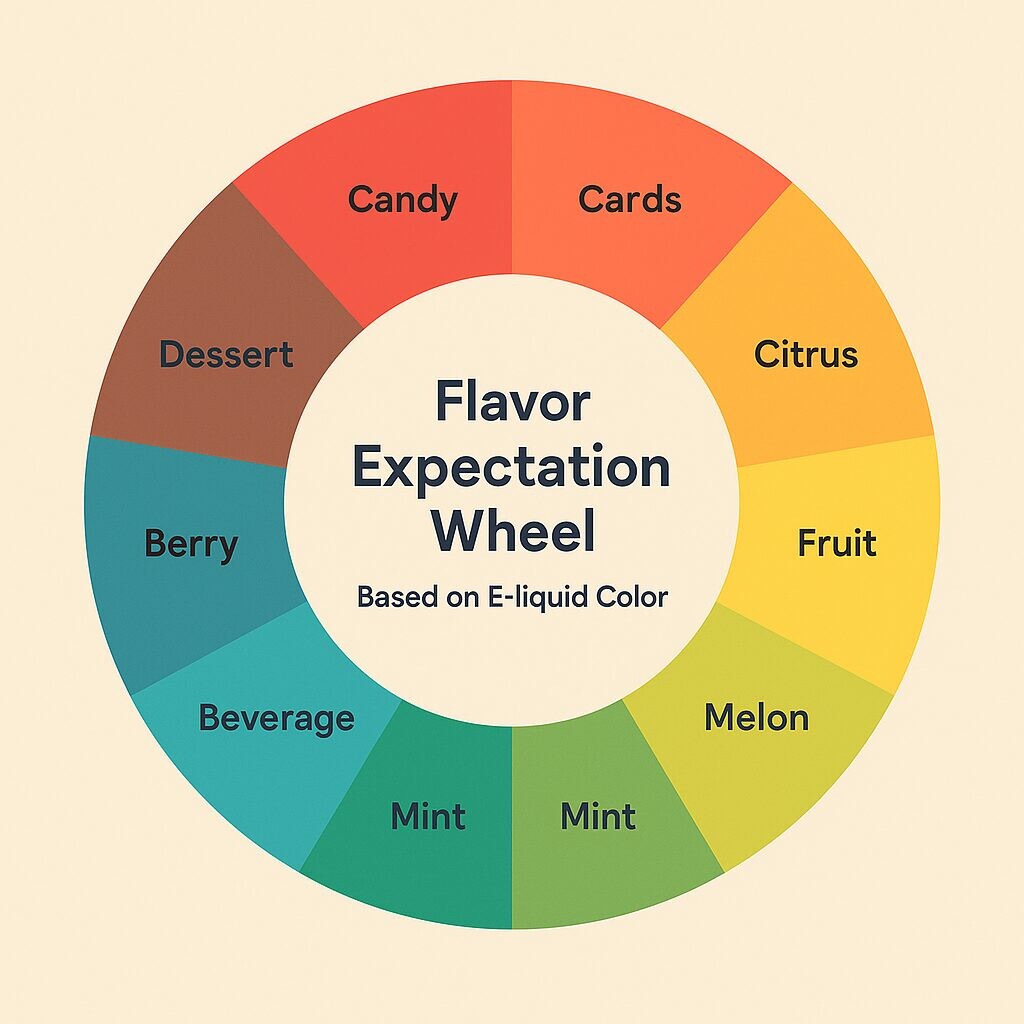
Flavor Expectation Wheel Based on E-liquid Color
In a crowded marketplace, appearance can play a key role in purchase decisions. Colored liquids stand out in clear bottles, create memorable visual branding, and are more photogenic for social media marketing.
However, certain consumer segments—especially health-conscious or experienced vapers—may associate clear e-liquids with higher purity, better performance, and less coil damage.
Trends by Demographic:
A transparent product often signals an honest brand. Consumers may believe that a lack of colorants equals fewer unnecessary additives and better quality control. Brands can leverage this by promoting “color-free,” “dye-free,” or “pure blend” labeling.
United States (FDA):
European Union (TPD):
Asia-Pacific:
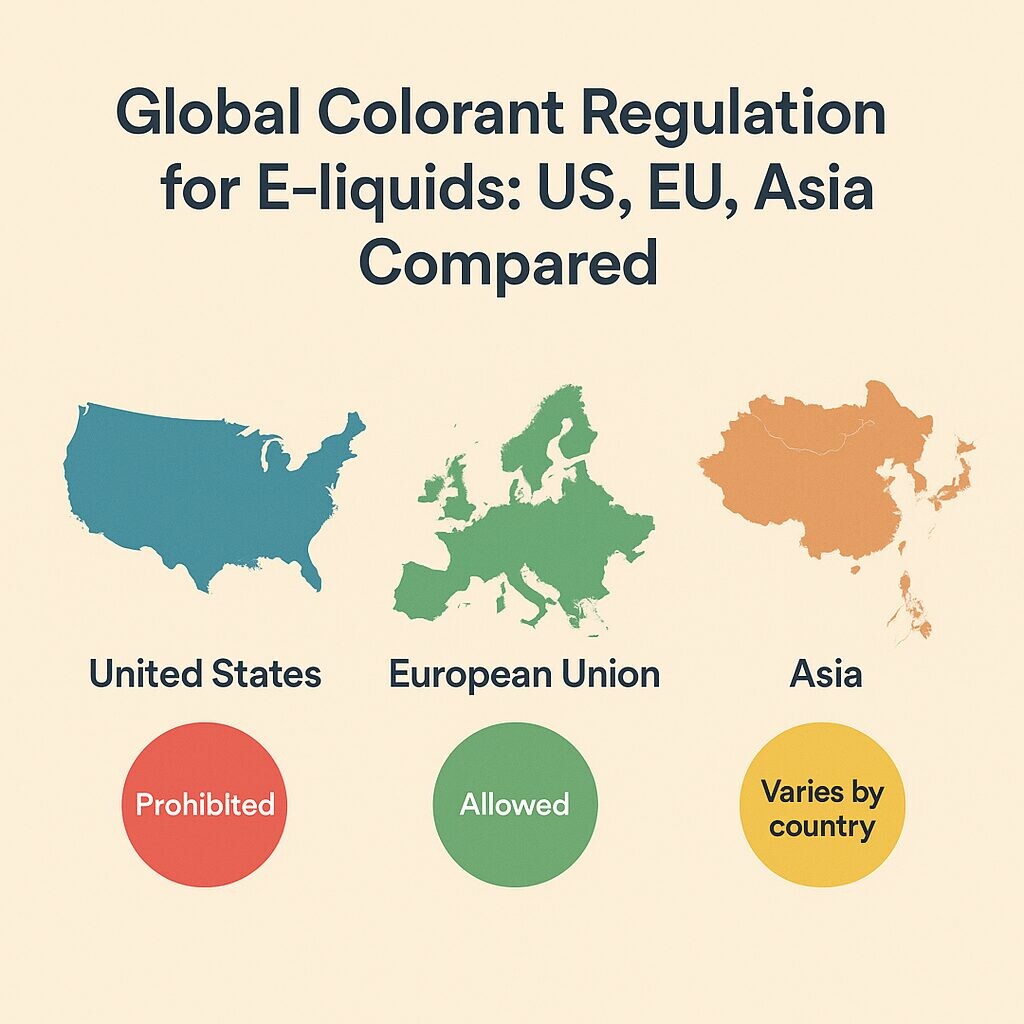
Global Colorant Regulation for E-liquids: US, EU, Asia Compared
When using colorants:
Misleading labels such as “natural flavor” when synthetic dyes are used can result in regulatory fines, consumer lawsuits, and brand damage. Full disclosure is both a legal and ethical best practice.
There is a visible shift in market demand for transparent and clean-label vape products. Modern consumers, especially those transitioning from smoking to vaping for perceived health benefits, are skeptical of unnecessary additives.
Clear E-liquid Advantages:
Bright colors remain effective in certain markets:
Manufacturers can appeal to both safety and visual appeal by choosing natural pigments that have secondary marketing value—like turmeric (immunity) or spirulina (eco-conscious).
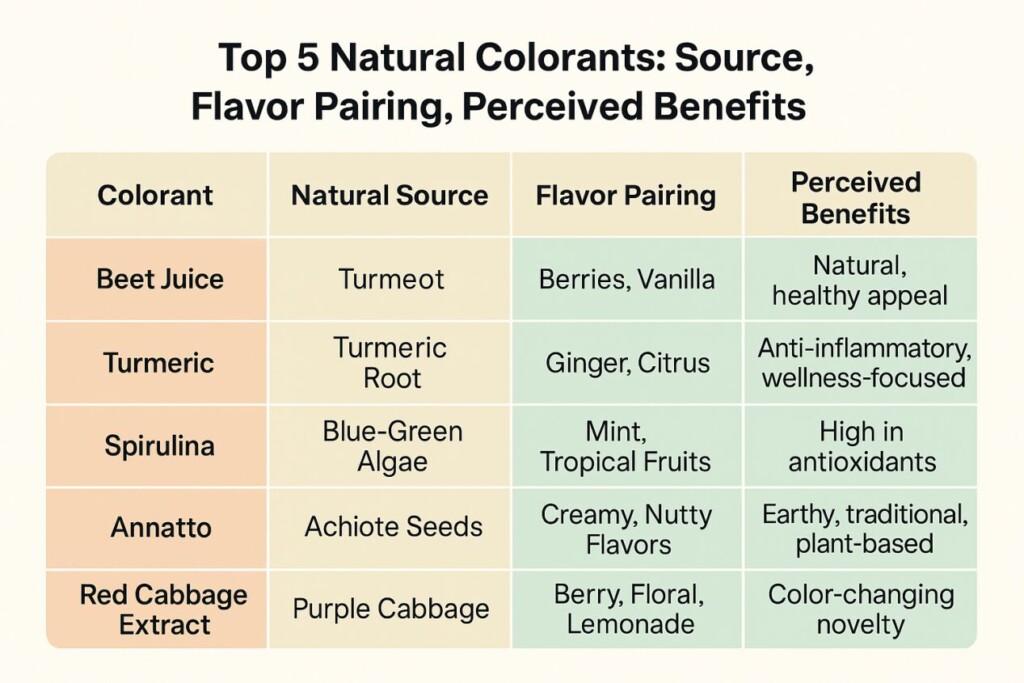
Top 5 Natural Colorants
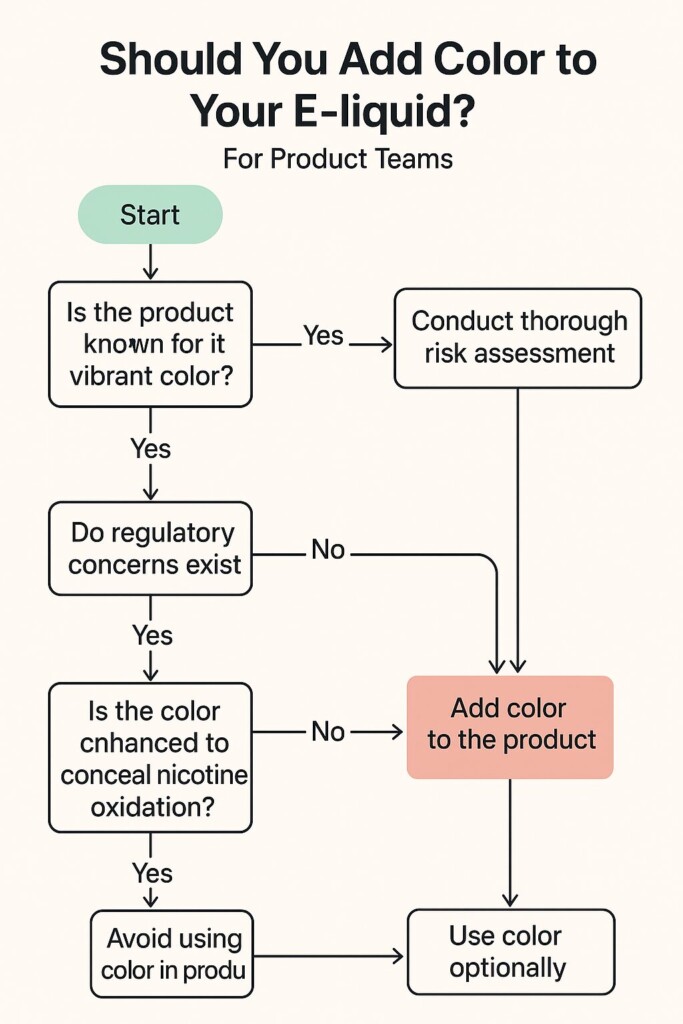
Should You Add Color to Your E-liquid
Consider:
At CUIGUAI Flavoring, our mission is to help manufacturers produce standout e-liquids that deliver on flavor, safety, and aesthetics. We offer both color-enhanced and clear flavor concentrates, allowing brands to meet different market demands without compromise.
Our Advantages:
We also support clients in labeling, testing, and shelf-stability studies. Whether you’re building a premium product line or an entry-level disposable series, CUIGUAI provides the technical and marketing expertise to help you succeed.
Learn more: Visit www.cuiguai.com to explore our full catalog of e-liquid flavorings and development services.
The question of whether to color your e-liquid isn’t black and white. It’s a nuanced decision influenced by chemistry, psychology, regulation, and branding. By understanding the implications of colored vs. colorless vape juices, brands can craft products that resonate with users while staying compliant and competitive.
Whatever direction you take, clarity in formulation and honesty in labeling will go a long way toward building trust and loyalty.
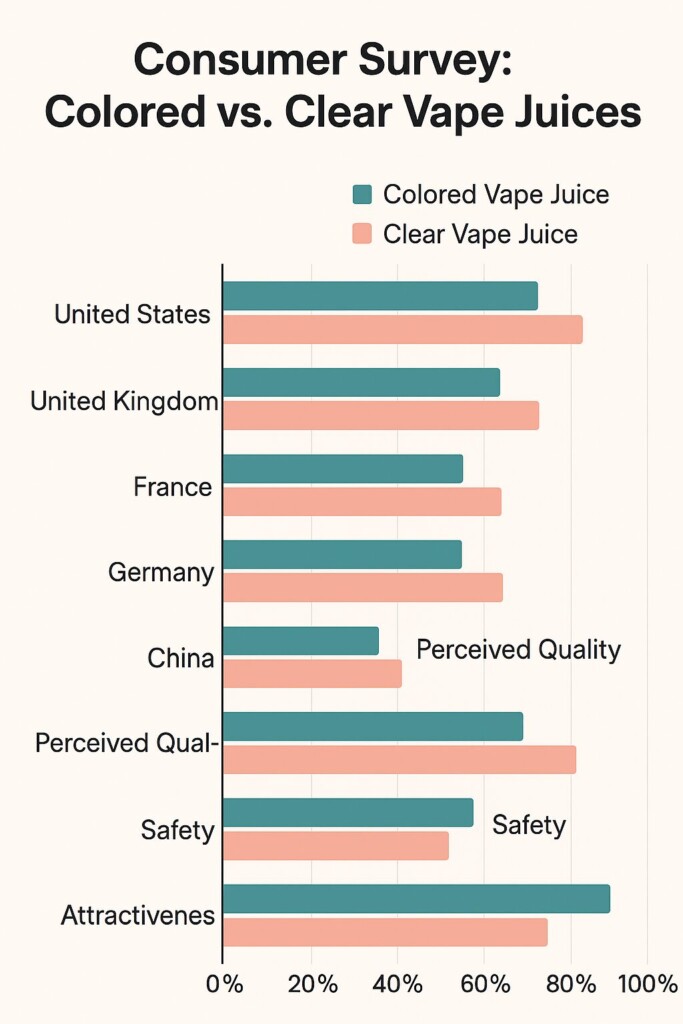
Consumer survey bar graph
Keywords: colored vape juice, natural colorants, visual cues in vaping, pigment safety, vape branding, CUIGUAI Flavoring, e-liquid formulation, flavor marketing, coil-friendly liquids
Author: R&D Team, CUIGUAI Flavoring
Published by: Guangdong Unique Flavor Co., Ltd.
Last Updated: Jun 10, 2025
The business scope includes licensed projects: food additive production. General projects: sales of food additives; manufacturing of daily chemical products; sales of daily chemical products; technical services, technology development, technical consultation, technology exchange, technology transfer, and technology promotion; biological feed research and development; industrial enzyme preparation research and development; cosmetics wholesale; domestic trading agency; sales of sanitary products and disposable medical supplies; retail of kitchenware, sanitary ware and daily sundries; sales of daily necessities; food sales (only sales of pre-packaged food).
Copyright ©Guangdong Unique Flavor Co., Ltd.All Rights Reserved. Privacy Policy